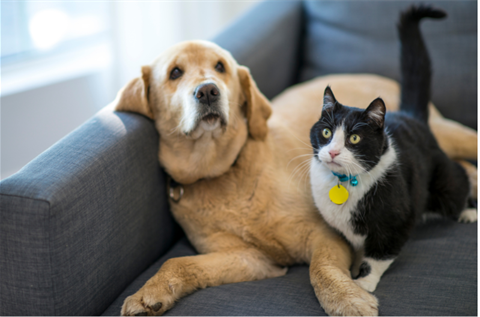Keeping pets safe in an emergency

The Southeast Area Animal Control Authority (SEAACA) has issued a preparedness list of tips to help pet owners keep their animals safe in case of a natural disaster or emergency.
From earthquakes and fires to severe rains and beyond, emergency situations can occur without notice and pose significant threats, especially to pets that may not be able to take care of themselves in such situations.
SEAACA's tips for emergency pet preparation
Keep a Kit. Make sure your emergency kit also includes items for your pet, such as:
- Pet food.
- Water for at least three days.
- Medications.
- Emergency phone numbers (your own, your veterinarian's, family members who could take care of your pet, etc.).
- Medical records.
- Photos of your pet.
- Extra identification tags, leash and/or harness.
- Any other information or supplies that would be helpful.
Place your emergency kit in a place that has easy access, for instance somewhere close to an exit door or garage.
First-Aid. In addition to conventional items used for humans, your first-aid kit should include flea and tick medications, latex gloves, and even a first-aid book or pamphlet geared toward animals.
Check It. Create a checklist of relevant items that will help your pet survive an emergency (include the items here in your checklist). Keep this checklist close to your emergency kit or with your personal belongings, to make sure you don’t forget anything.
Toys & Treats. Keep chewing toys, blankets, bedding, and other items that your pet loves. If your pet can play with something familiar, she or he could feel more relaxed during an emergency situation.
Something to Carry. Have a pet carrier ready for quick access when needed. Keep supplies nearby, such as a litter box with newspaper, paper towels, bleach or cleaning solution, and plastic bags. If you need to evacuate your home, you’ll want to be able to take care of your pet’s needs.
Stay In. If the emergency entails environmental smoke or loud sounds in your neighborhood, bring your pet inside and try to keep them in a safe, quiet place.
Make Arrangements. Well in advance of a disaster, try to set up arrangements at a local kennel, friend’s house, or other appropriate place in case you need to take your pet to a temporary boarding home.
License and Microchip. When pets have a valid license and a microchip with current information, they can be more easily reunited with owners during a disaster or emergency. Make sure your pets’ contact information is current. SEAACA provides microchipping services to pet owners throughout Southern California.
About SEAACA
SEAACA (Southeast Area Animal Control Authority) provides animal care and control services for 14 cities in southeast Los Angeles County and northern Orange County, including Bell Gardens, Bellflower, Buena Park, Downey, Lakewood, La Palma, Montebello, Norwalk, Paramount, Pico Rivera, Santa Fe Springs, South El Monte, South Gate and Vernon.
SEAACA's Animal Care Center located in Downey reunites pet owners with lost pets and assists new pet owners with pet adoptions. SEAACA’s Animal Wellness Clinic, also located in Downey, spays and neuters all adoption animals plus provides vaccinations and microchipping to the general public.
For more information about SEAACA, please visit www.seaaca.org or call 562-803-3301.